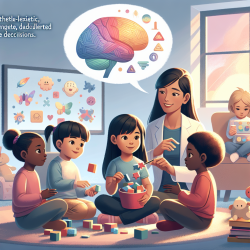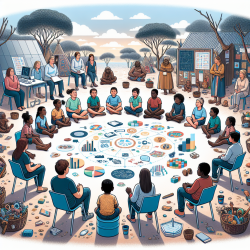In the field of speech-language pathology, making data-driven decisions is paramount for achieving optimal outcomes, especially for children with neurodevelopmental disorders. A recent study titled Variation in morpho-lexical development within and between diagnoses in children with neurodevelopmental disorders provides invaluable insights into how practitioners can refine their approaches to language intervention.
Key Findings and Their Implications
The study examined morpho-lexical development in 88 children aged 2;6 to 5;6 years, each diagnosed with one of six conditions: Down syndrome (DS), motor disorders (cerebral palsy and developmental coordination disorder), global development delay, disorders of relating and communicating, other genetically defined diagnoses, or language delay due to premature birth.
Key findings include:
- Prematurity was the only condition that significantly predicted morpho-lexical scores in interaction with age.
- There were strong similarities in early morpho-lexical development across different clinical populations, with some notable differences.
- Individual trajectories of vocabulary growth could not be reliably predicted by diagnosis.
- Distribution of word types only distinguished children with language delay due to prematurity from those with DS and those in the relating and communicating group.
How Practitioners Can Apply These Findings
Given these insights, here are actionable steps practitioners can take:
- Focus on Individualized Intervention: Rather than relying solely on diagnosis, tailor interventions to each child's unique developmental trajectory. This aligns with the study's finding that individual progress cannot be accurately predicted by diagnosis alone.
- Incorporate Longitudinal Data: Use longitudinal assessments to monitor vocabulary growth and adapt interventions accordingly. This will help capture the nuances of each child's development over time.
- Consider Broader Similarities: While there are differences between diagnostic groups, there are also significant similarities. Incorporate strategies that are effective across various conditions, particularly for morphological and lexical development.
- Engage Parents: Utilize tools like the New Zealand MacArthur-Bates Communicative Development Inventory (NZCDI) to gather detailed parent-reported data. This can provide a more comprehensive view of the child's language abilities.
Encouraging Further Research
The study underscores the importance of accommodating individual variation within diagnostic groups and recognizing broad similarities across them. Future research should explore latent dimensions such as non-verbal cognition, health status, and gender, which can also impact development.
For practitioners eager to delve deeper, the original research paper is a must-read. To read the original research paper, please follow this link: Variation in morpho-lexical development within and between diagnoses in children with neurodevelopmental disorders.










